
Communication extends far beyond the words we speak; it is a rich tapestry woven with the silent threads of body language. Every furrowed brow, crossed arm, and averted gaze tells a tale just as loudly as spoken language. In the family, these non-verbal signals are in constant play, often expressing the heart of our emotions without a whisper. Exploring the Basics of Body Language is not just about recognizing these signals, but understanding them, affording us a deeper connection with our loved ones. From the shy smile of a toddler to the stooped posture of a teenager, the dance of gestures and expressions is a silent symphony that, if interpreted correctly, enhances our empathy and enriches our family interactions.
Basics of Body Language
Decoding the ABCs of Body Language in Family Dynamics
Hey there, fabulous families! Are you looking to amplify your understanding of what your loved ones are “saying,” even when they’re not speaking? Today, let’s cosy up and chat about a topic that might just revolutionize your family communication: the ABCs of body language in family dynamics.
A is for Awareness
First up on our communication treasure map is Awareness. It’s important to notice those non-verbal cues that our loved ones exhibit. Is your teen slumped over at dinner? Perhaps they’re carrying the weight of a challenging day on their shoulders. Little ones tugging at their ears or hair during a playdate could be signaling stress or discomfort. By being aware of these signals, we open a door to deeper empathy and connection within our family.
B is for Boundaries
Now let’s talk about Boundaries. Personal space can be like invisible bubbles around each of us – and the size and flexibility of these bubbles often vary from person to person. Respecting these boundaries fosters trust and comfort among family members. Does your partner take a step back during a heated discussion? It might be their way of asking for a little breathing room. Honoring these unspoken boundaries can help maintain a harmonious home environment.
C is for Context
Last, but certainly not least, is Context – because when it comes to body language, context is king! A crossed arm during a chilly evening might just mean someone is cold, not closed off. A furrowed brow during homework time? It could be concentration, not frustration. Assessing the situation helps interpret body language accurately, ensuring we don’t jump to conclusions about a loved one’s feelings or intentions.
Understanding the ABCs of body language can feel a bit like learning a new language, but it’s a journey well worth taking for the sake of our family’s emotional fluency. By tuning into these non-verbal subtleties, we create a deeper, more understanding family dynamic – one where every shrug, smile, and sigh has the chance to be seen and understood. So here’s to becoming fluent in the love language of gestures, expressions, and the space between words – and to creating a family life that’s as harmonious as it is heartfelt!
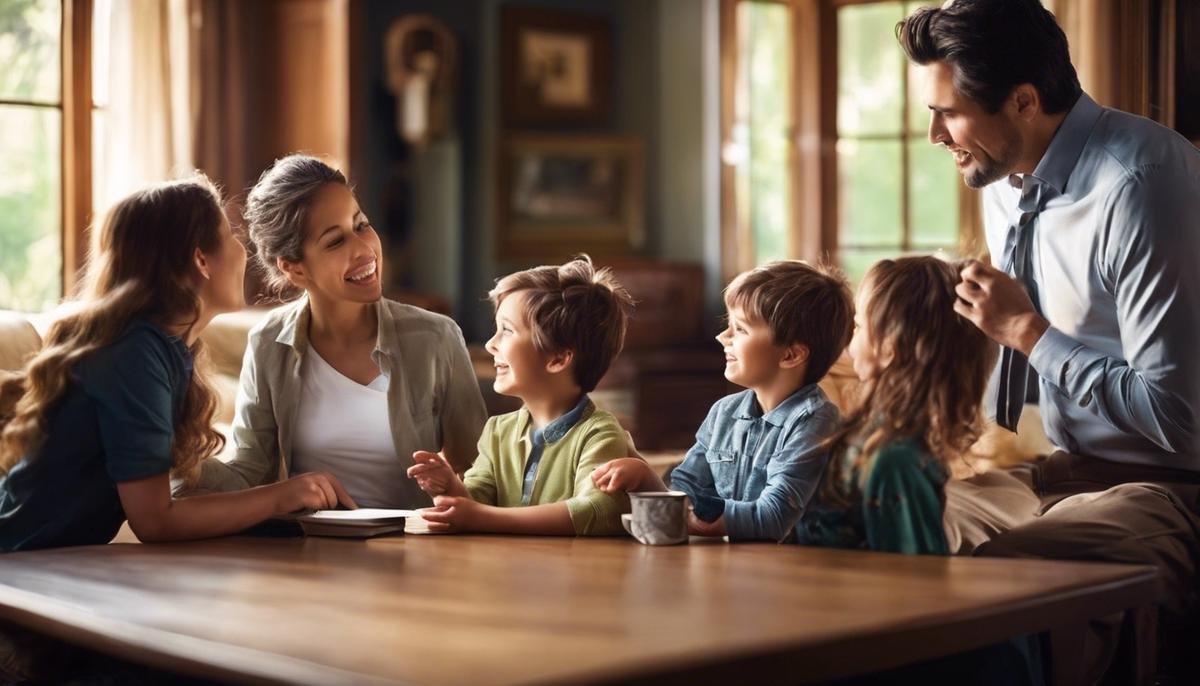
Interpreting Children’s Body Language
Getting to the Heart of Your Child’s Laughter: How to Really Listen
Picture this: Your toddler erupts into a fit of laughter as you make a silly face, or your preteen snickers behind a closed door with friends. It’s easy to take these outbursts of joy at face value – after all, laughter is the universal language of happiness, right? However, there are layers to these wiggles and giggles that can often go unnoticed without a keen eye and ear for what lies beneath.
At the core of those giggle fits or the body-wiggling laughter might be more than just amusement. Children often express a range of emotions through their laughter, which can be a window into their comfort level, needs, and even worries. Recognizing the different tones and types of laughter can clue you into your child’s emotional world.
When laughter is shared, it can be a powerful bonding agent, creating a moment of connection that strengthens family ties. These shared episodes of hilarity are not just fun; they’re foundational to building trust and camaraderie within the family unit. Encourage humor and take the time to share jokes, funny stories, or playful activities – these are the seeds of joyful memories your family will cherish.
However, it’s just as important to identify laughter that isn’t emanating from a genuine place. Nervous laughter, for example, can signal discomfort or anxiety. It might sound forced or come at seemingly odd times, such as during a serious conversation or after a child has made a mistake. This kind of laughter begs for a sensitive approach – a gentle inquiry about what’s really going on.
What about the silent chuckles? Or the fits of laughter that end as abruptly as they start? Sometimes, these can be indicators of private jokes or inner thoughts children aren’t ready to share openly. While it’s essential to respect their privacy and personal space, remaining approachable ensures they feel safe to share when they’re ready.
Emphasizing open communication means also empowering children to express when they don’t find something funny. Everyone’s sense of humor is different, and what is hilarious to one person might be offensive or upsetting to another. Encouraging respect for diverse reactions to humor helps foster empathy and emotional intelligence.
Simultaneously, being present during those times of joy allows for the observation of patterns in what makes each family member laugh, viewing humor as a unique fingerprint. These patterns become the foundation of understanding individual perspectives, leading to stronger relationships.
So next time the house is echoing with peals of laughter, take a moment to listen deeply. Observing the layers of emotion behind the wiggles and giggles can forge deeper connections, foster mutual respect, and ultimately unveil the hidden language that laughter speaks within the family. Remember, it’s not just about hearing the laughter – it’s about understanding the hearts behind it.
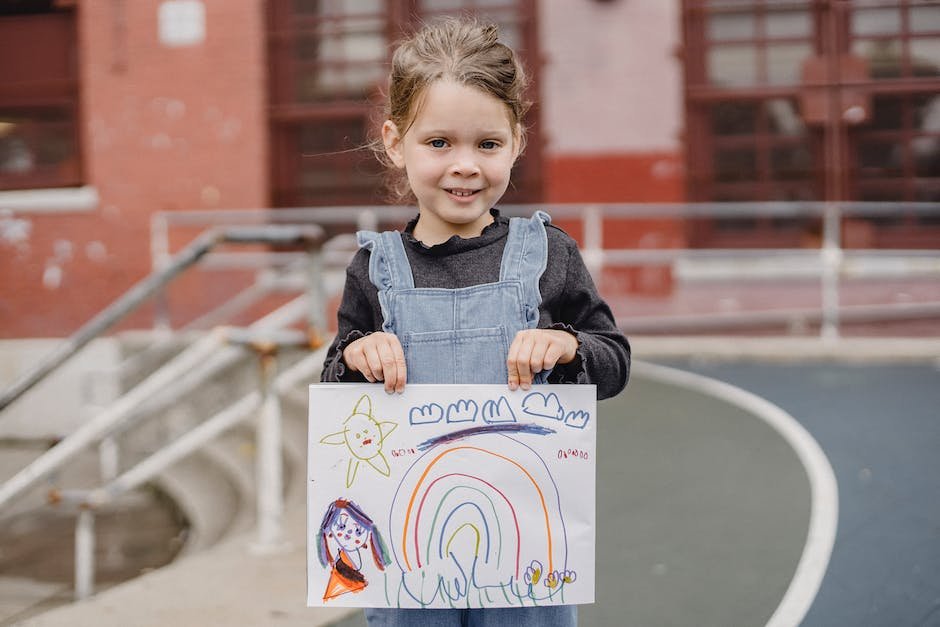
Body Language and Parental Influence
Are You Saying More Than You Think to Your Kids?
When it comes to communication within the family, engaging with our children through conversation is something we’re all familiar with. But have you stopped to consider the myriad of other ways you’re communicating with your little ones without even saying a word? Believe it or not, some of the most profound messages are not spoken aloud but are conveyed through the subtleties of shared silence.
Shared silence isn’t about creating an awkward void; it’s about offering a space where companionship thrives without the need for words. It’s the quiet moments spent together on a family hike, the hush that falls over the dinner table as everyone savors a favorite meal, or the silent solidarity of working on a puzzle or craft project together. Each silent moment tells kids that their presence is enough; they don’t need to perform, entertain, or chatter to be a valued part of the family.
Then there’s the power of presence, which speaks volumes. Ever noticed how children beam when you watch them play, even if you’re on the sidelines not saying a word? Your mere presence at soccer games, dance recitals, or during bedtime routines communicates commitment, support, and love. It says, “I’m here for you,” louder than any cheer from the stands ever could.
Eye contact is yet another silent communicator. A gaze can express understanding, acknowledgement, or encouragement. It’s a means to non-verbally affirm them, to say, “I see you and what you’re experiencing matters to me.” On the flip side, a lack of eye contact can unintentionally send the message of disinterest or preoccupation, something to be mindful of in our digital age.
Touch is a language all its own, too. A reassuring pat on the back, a warm hug, or a gentle hand squeeze can offer comfort or praise without a single syllable being uttered. It’s an instant connector and, for many children, a primary way they feel loved and secure. Let’s not forget respecting the child’s comfort with touch and personal space—consent is key, even within family.
Last but not least, consider the space we create for our little ones—their rooms, play areas, or spots at the dinner table. The environment we craft speaks about the order, harmony, or creativity we want to foster in their lives. A well-considered space offers a silent nudge for kids to play, dream, and grow.
So, the next time you’re with your kids, pause and take a breath. What’s left unsaid is still a part of the rich tapestry of family communication. Remember, every look, every touch, every silent moment together—all of these weave the narrative of home and heart.
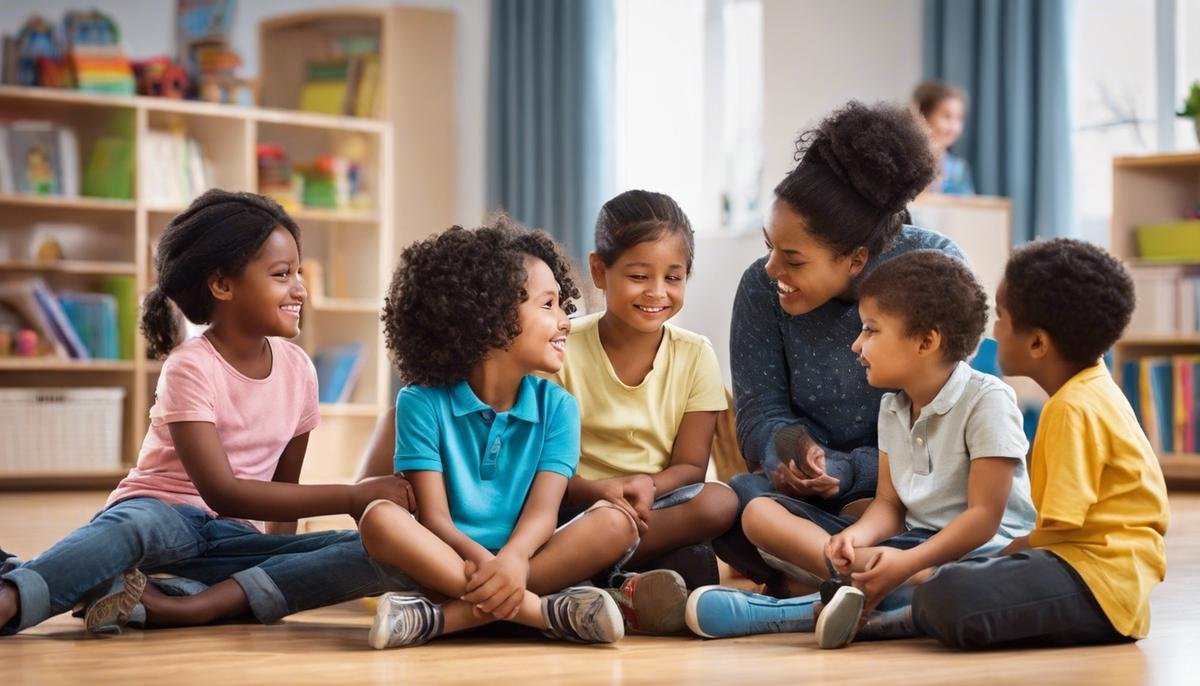
Improving Communication with Body Language
Embracing the Quiet: How Silent Signals Nurture Family Conversations
Have you ever sat with your family, immersed in a comfortable silence, and felt completely understood and at peace? These silent signals, often overlooked, play a tremendous role in fostering a happy and communicative family life. Let’s dive into the subtle yet powerful ways silence supports our daily interactions, shaping an atmosphere of trust and affection.
The Power of Shared Silence with Children
When interacting with children, silence isn’t empty; it’s a canvas where confidence in calmness is painted. Taking a moment of shared silence before responding to a child’s query or comment allows them to feel heard and valued. It shows them their thoughts warrant reflection, not just a quick, possibly dismissive reply. This shared silence can often speak louder than words, conveying patience, and respect for their developing ideas.
The Significance of Presence
Ever noticed how just being there can be the strongest statement of all? A dedicated presence—sitting beside them during homework, being nearby as they play—sends a message to children that they are important, their activities are interesting, and their company is enjoyed. Presence is a non-verbal cue that resonates deeply with children, instilling a sense of importance that words alone cannot always convey.
The Importance of Eye Contact
Eye contact is a powerful non-verbal tool that can bridge the gap between spoken words and heartfelt emotions. Maintaining gentle eye contact during conversations conveys interest and sincerity, prompting children to share more openly and feel truly seen. It’s a silent signal that encourages honesty and nurtures a connection that transcends words.
The Language of Touch
A touch can communicate a multitude of feelings—love, reassurance, safety, and celebration. The comforting embrace after a hard day, the high-five that marks a small victory, or the reassuring hand on the shoulder all speak directly to a child’s need for physical affirmation. Through touch, families can convey warmth and security, paving the way for confident and happy children.
Creating a Nurturing Environment
The spaces we inhabit speak volumes without uttering a single word. The thoughtful arrangement of a child’s play area or bedroom can communicate care and attention. An environment that is both organized and filled with personal touches not only encourages creative expression but also provides a sense of stability and belonging. By crafting spaces that reflect thoughtfulness and love, silent affirmation wraps around the family like a cozy blanket, fostering a nurturing and supportive atmosphere.
As families continue to grow and navigate the complexities of communication, it’s important to remember the little things that speak volumes. The next time you find yourself in the midst of family time, take a moment to appreciate the silent signals—the pauses, the presence, the lingering eye contact, the caring touch, and the environment that says ‘you matter.’ These gestures might just be the key to unlocking deeper connections and more joyful family conversations.
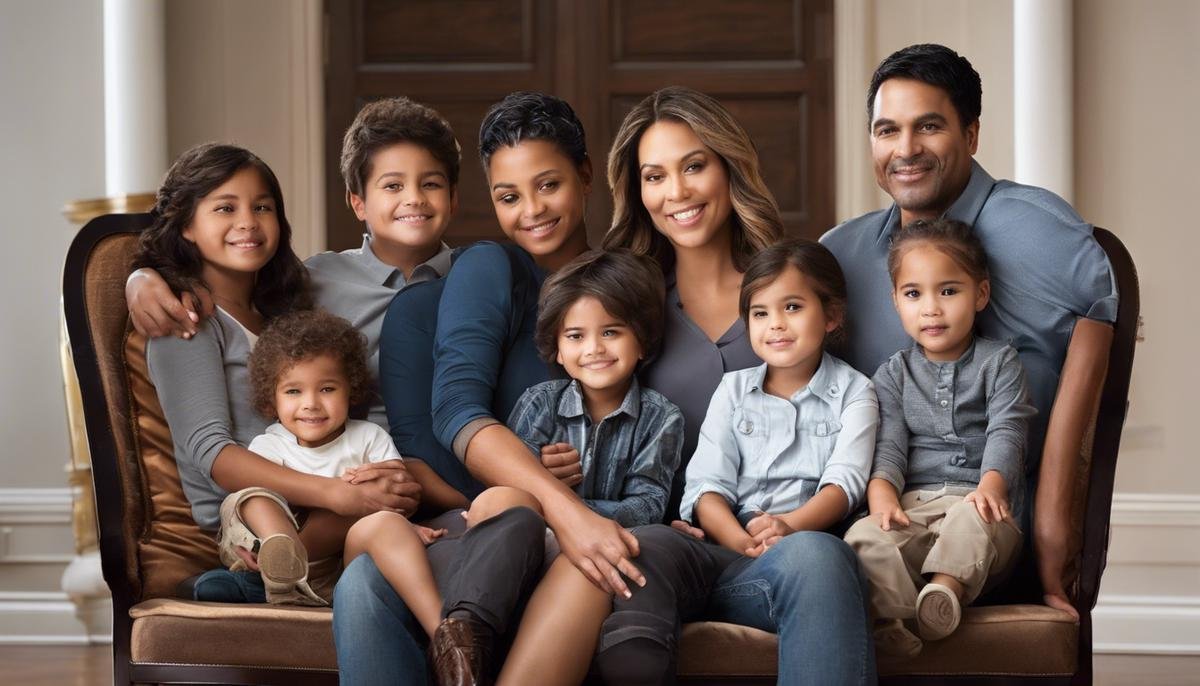
Non-Verbal Misunderstandings and Resolution
Title: Navigating the Silent Side of Family Communication
Have you ever noticed how a gentle touch or a warm, firm hug can say more than a thousand words? Or how a quiet room can still be filled with love and mutual understanding? As families, we don’t just communicate with words; our actions, the spaces we live in, and even our silence carry rich layers of meaning.
When body language leads to mix-ups, it’s usually because two hearts are in the right place, but the message gets tangled up along the way. One might think, how can silence or a mere touch lead to misunderstandings? Well, it’s all in the nuance.
Consider the profound impact of a simple gesture. A hand on the shoulder can both comfort and guide. However, it’s crucial to gauge a child’s response to touch. Some might find a pat on the back encouraging, while others could see it as an invasion of their personal space. Respecting these differences is key. Observe, ask, and learn from each family member’s physical responses and comfort levels.
Diving deeper, let’s talk about crafting spaces that speak without uttering a sound. The design of a room – bright, airy kitchens, cozy, soft-lit living areas, or neatly organized bedrooms – can non-verbally affect the mood and interactions of its occupants. A child’s play area that radiates creativity or a tranquil reading nook can communicate an unspoken invitation for joy or calm reflection.
Even in the stillness, there’s communication. Silent signals – a knowing glance exchanged, a deep sigh, or the mutual decision to sit quietly together – these are the unspoken threads that weave the tapestry of family bonds. They create a safe zone for those moments when words are too much or too little to convey what’s truly felt.
In the energy of silence, shared between a parent and child, there is solace and understanding that sometimes, it’s okay not to speak. There’s a beauty in just being together, present in the moment. Presence isn’t just about being physically there; it’s about being emotionally and mentally tuned in. Kids know the difference and feel more valued when their feelings are acknowledged silently yet powerfully.
And let’s not forget those peepers – the eyes! They’re the windows to our souls, right? Eye contact is a powerful form of non-verbal interaction. It signifies attention, concern, respect, and so much affection. But remember, it’s a dance – too little could be perceived as disinterest, and too much can inadvertently intimidate. It’s about finding that perfect balance that conveys, “I see you, I hear you, and you’re important to me.”
As families, while embracing the beautiful cacophony of everyday life, let’s not underestimate the eloquence of non-verbal cues – the whispers of our actions, the love language of our crafted spaces, and the symphony in our silences. They say what words sometimes cannot, nurture connections that words often overlook, and strengthen the heartstrings that bind us forever as a unit, as a loving, understanding, and communicative family.
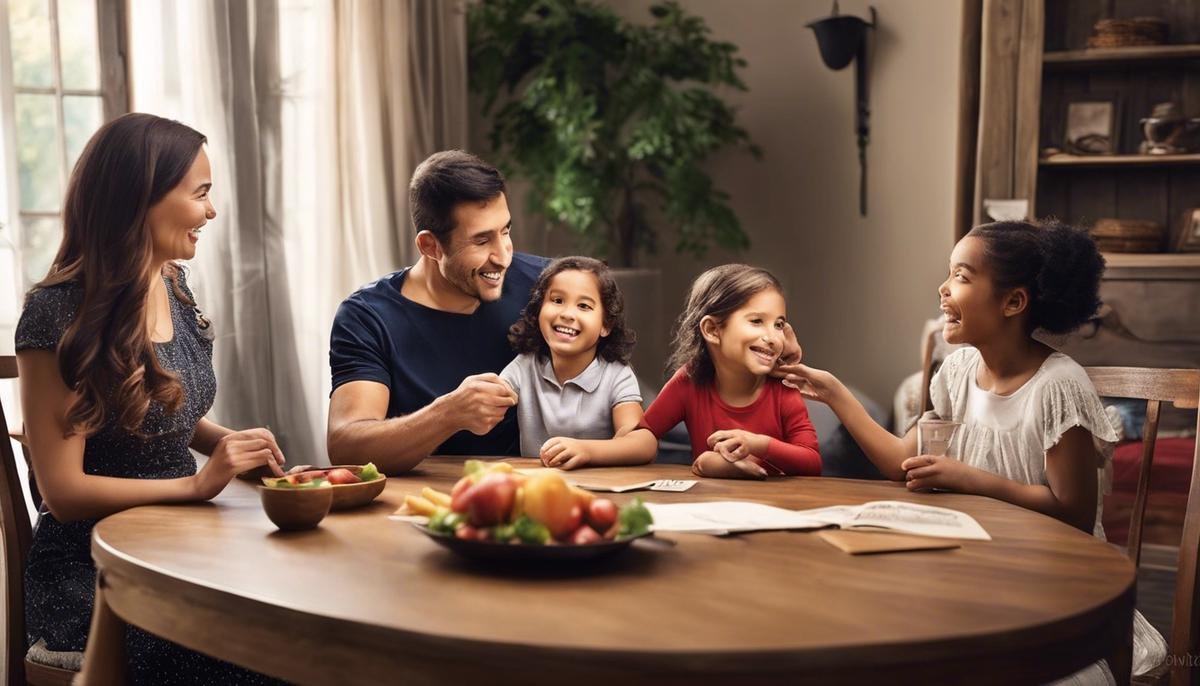
As we weave through the tapestry of non-verbal communication within the family, we come away with a newfound appreciation for the complexity and brilliance of unspoken interaction. The silent conversations that take place in the spaces between words hold immense power to bind or divide. With the insights gained on the nuanced interpretation of body language and the impact we have on one another, even without uttering a syllable, we are empowered to foster a home filled with understanding and warmth. Let us carry forward this knowledge not as an end, but as an ongoing commitment to nurture the silent yet profound connections that unite our families.




